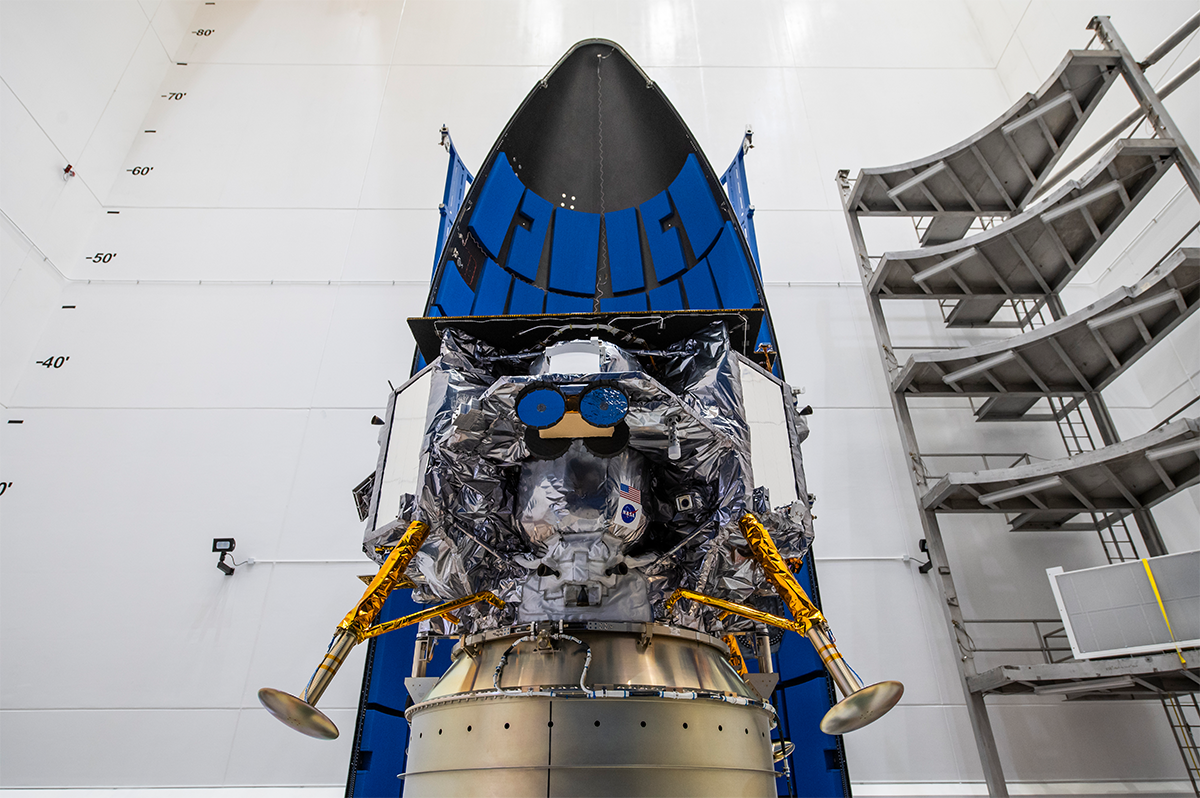
Fueled and integrated with ULA’s Vulcan rocket, Peregrine is targeting launch on January 8, 2024
Pittsburgh, PA – December 19, 2023 – Astrobotic announced today their Peregrine lunar lander successfully completed all integration milestones and was mated with United Launch Alliance’s Vulcan rocket payload adapter on November 16, 2023. After a 3-week campaign to fuel and complete final checkouts, the Peregrine spacecraft is ready to launch a historic mission to the Moon on January 8, 2024.
“I have high praise for the professionalism, dedication, and technical expertise demonstrated by the Astrobotic team throughout the complex multi-year Peregrine development program. Evolving Peregrine from a paper concept to a fully tested spacecraft ready for launch is a remarkable achievement for a small business,” said Sharad Bhaskaran, Peregrine Mission One Director.
Peregrine is Astrobotic’s first lander mission, and the team plans to become the first commercial company to successfully land a spacecraft on the lunar surface. The lander carries a total of 20 payloads, or cargo, including 5 from NASA’s Commercial Lunar Payload Services initiative. The payload teams have missions that vary from seeking indications of water-ice near the lunar surface to demonstrating a rover swarm. The lander also has several payloads representing humanity through artwork and historical artifacts.
“If you’ve been following the lunar industry, you understand landing on the Moon’s surface is incredibly difficult. With that said, our team has continuously surpassed expectations and demonstrated incredible ingenuity during flight reviews, spacecraft testing, and major hardware integrations,” says John Thornton, Astrobotic CEO. “We are ready for launch, and for landing.”
After launch, Peregrine has a long checklist of milestones to complete on its way to the Moon. The first handful will be executed shortly after launch, when the spacecraft will separate from the rocket, power on, and establish communications with Earth. At this stage, telemetry flowed through the NASA Deep Space Network system to the Astrobotic Mission Control Center in Pittsburgh will start informing the mission control team of the spacecraft’s position, orientation, and general operational health.
About 40 minutes after separation from ULA’s Vulcan rocket, Peregrine’s propulsion system will activate and begin receiving commands from Astrobotic’s Mission Control Center. One of the first commands will initiate thrusters to point Peregrine’s solar panels at the Sun to begin charging its battery. During cruise, the team will orchestrate trajectory adjustment maneuvers in Earth orbit before lunar orbit insertion. Peregrine will then dwell in a stable orbit and perform system checkouts before attempting a historic landing on February 23, 2024.

